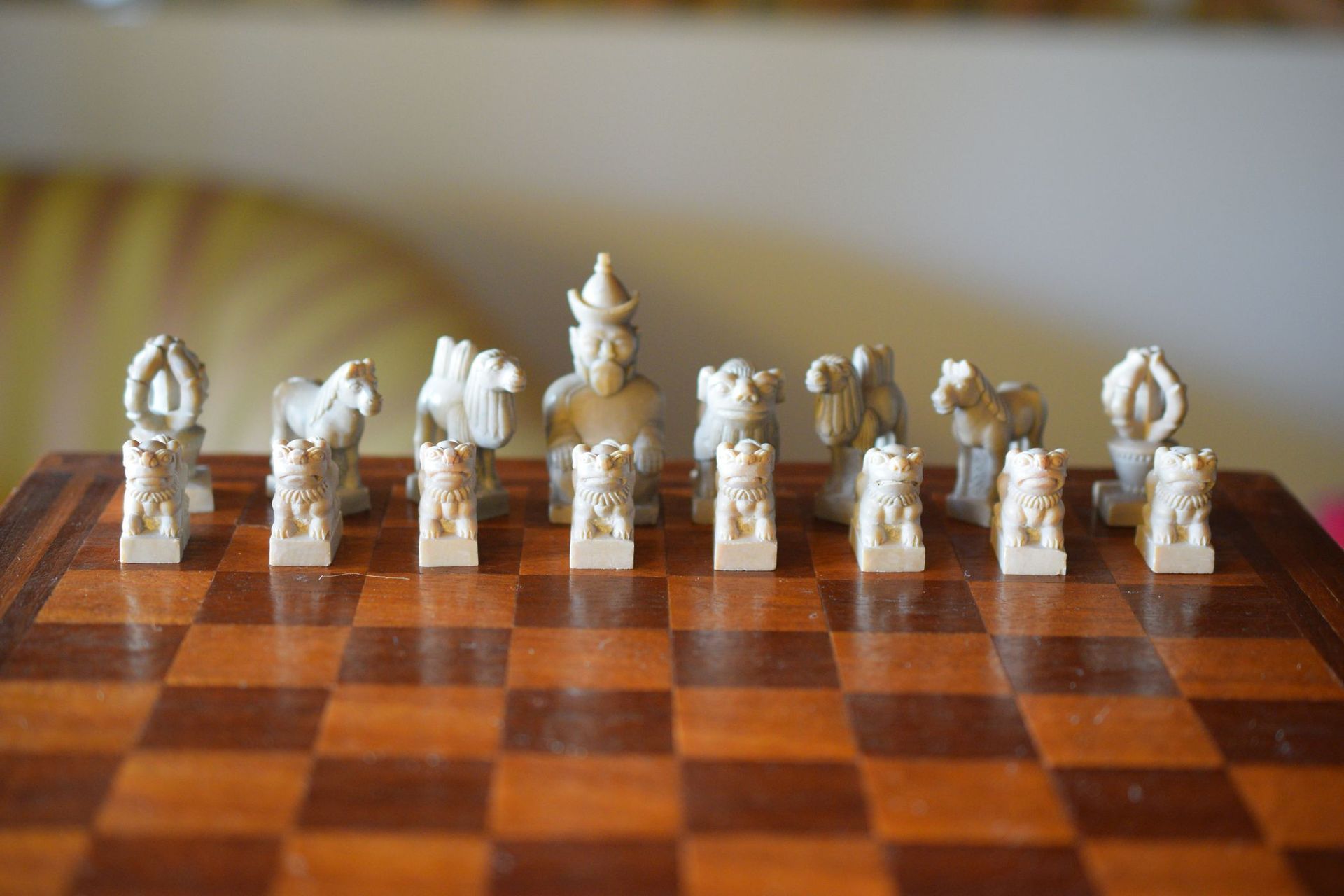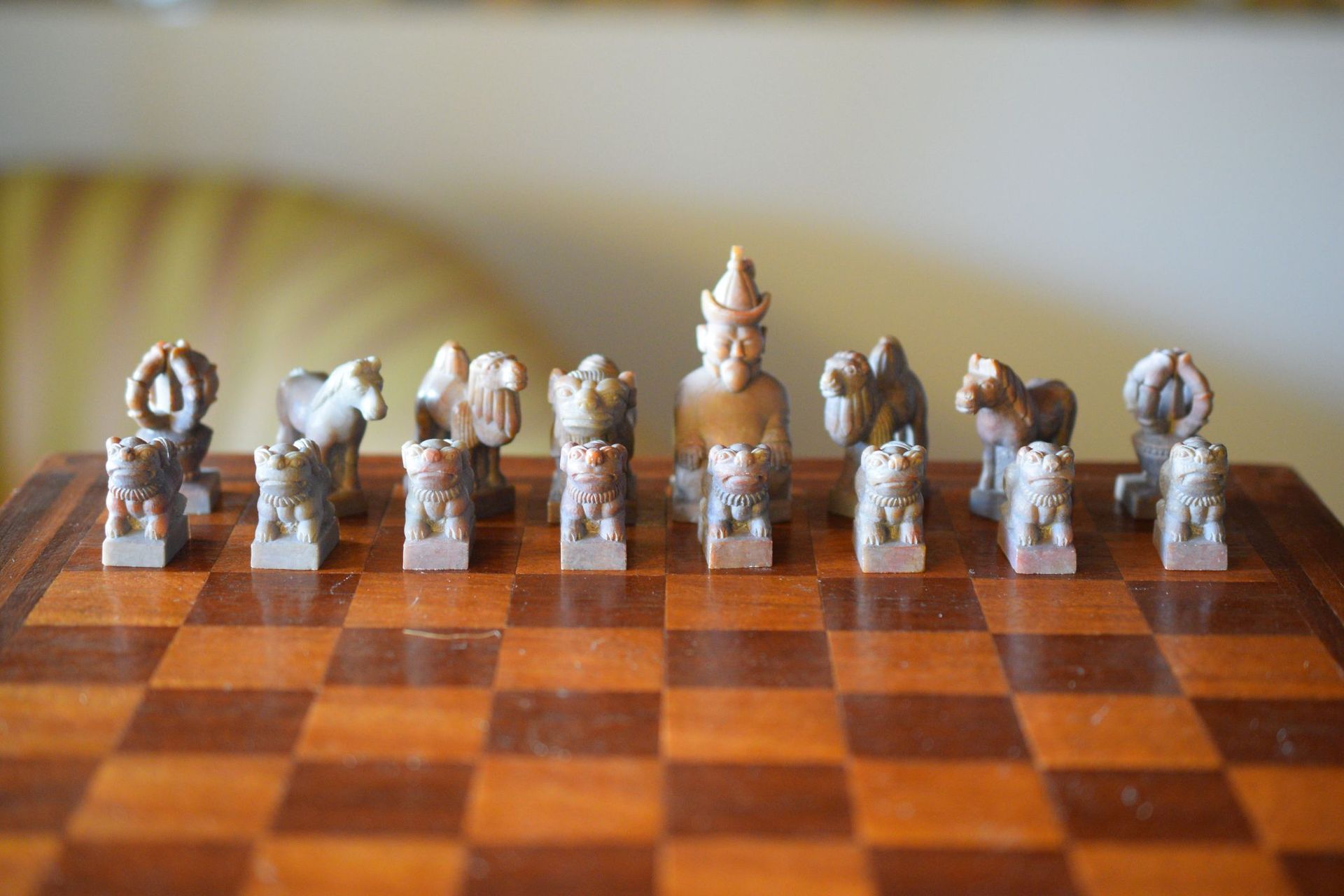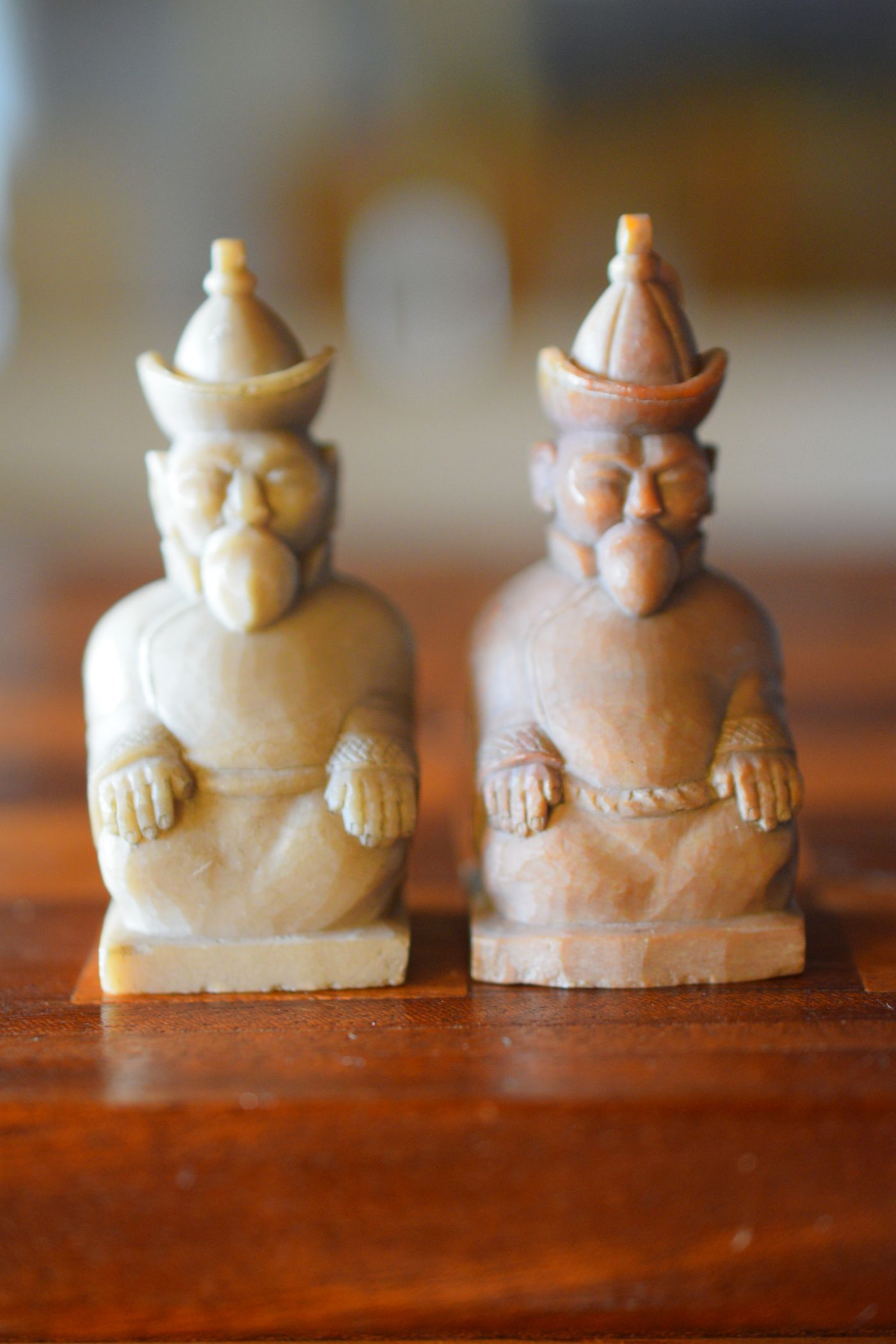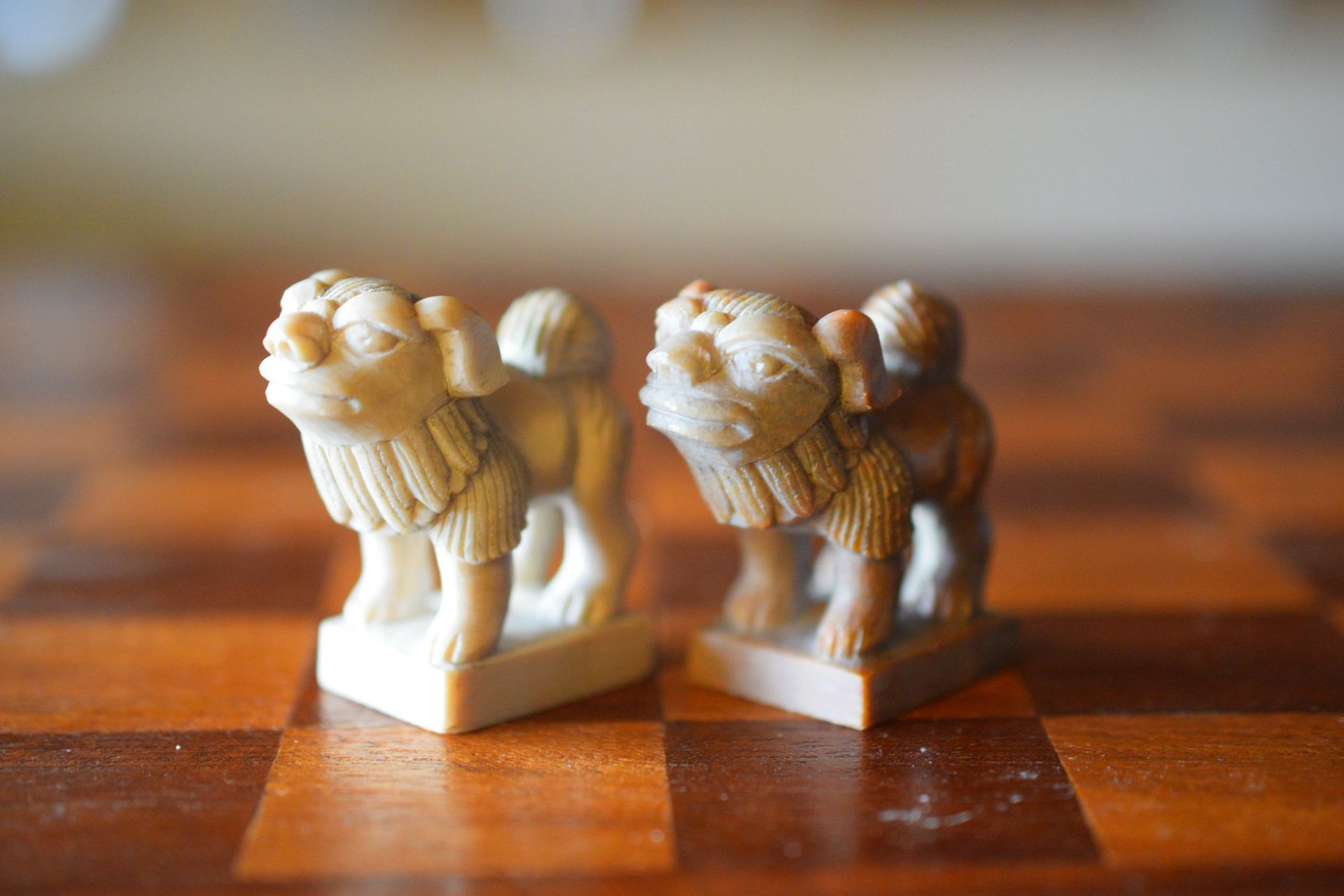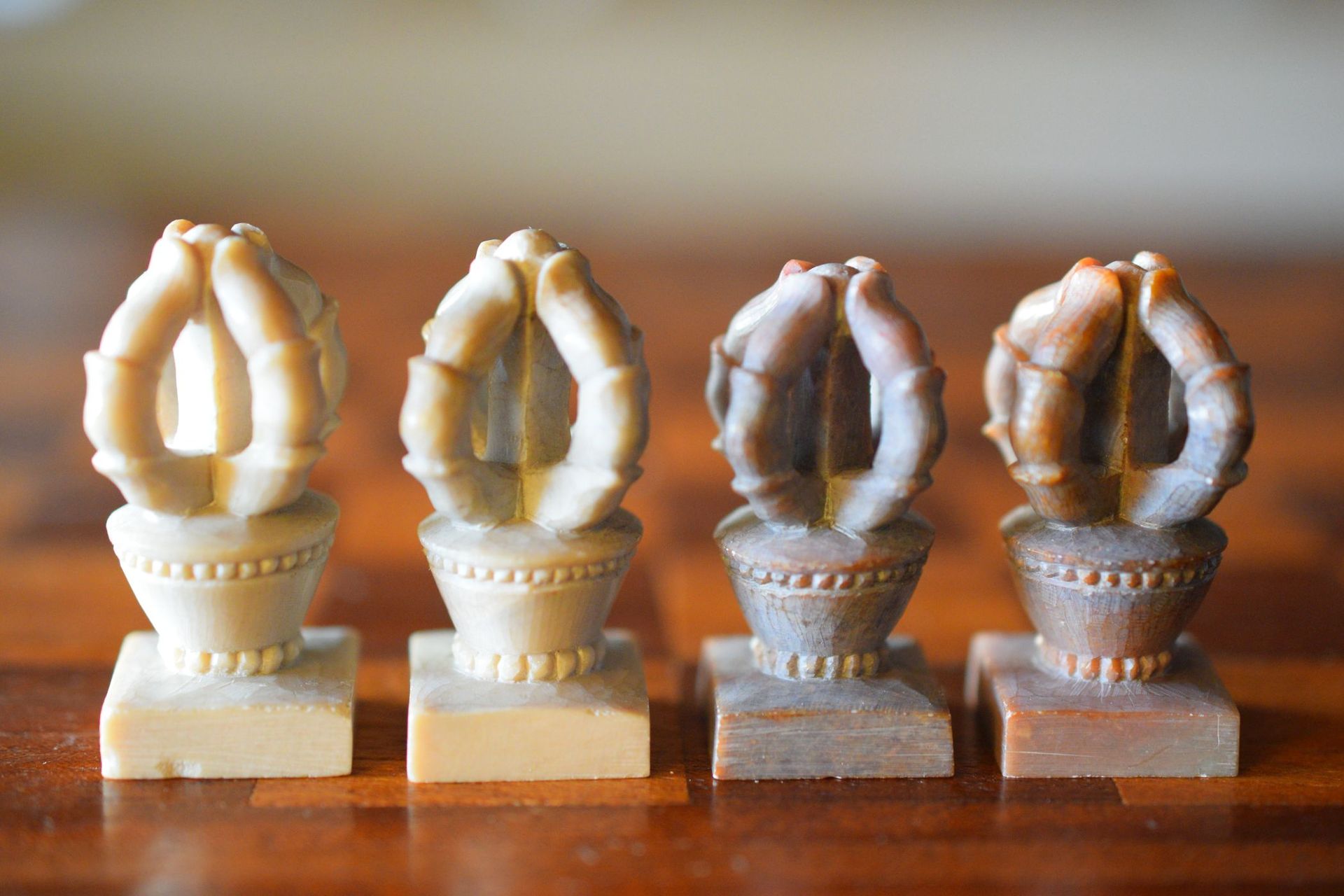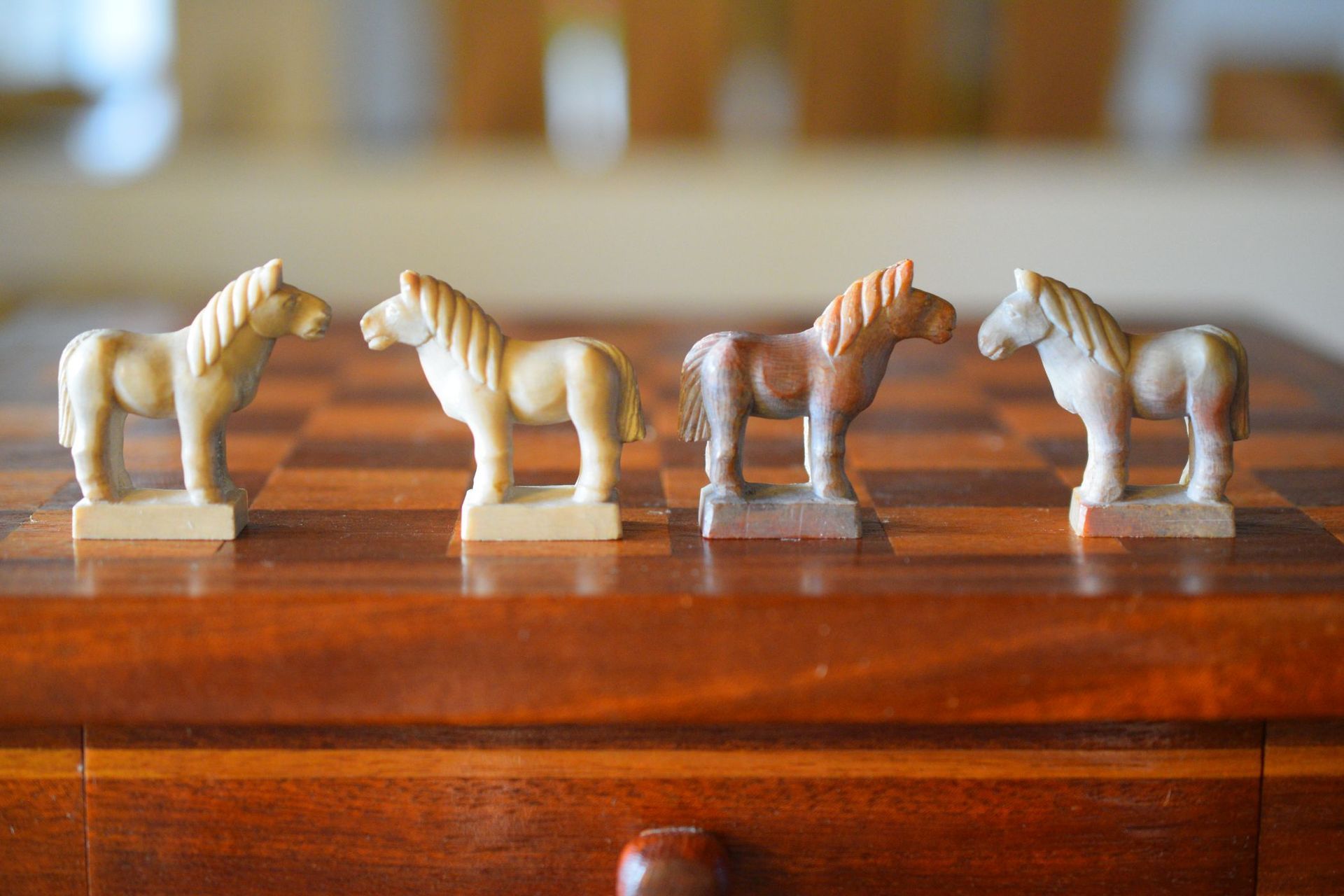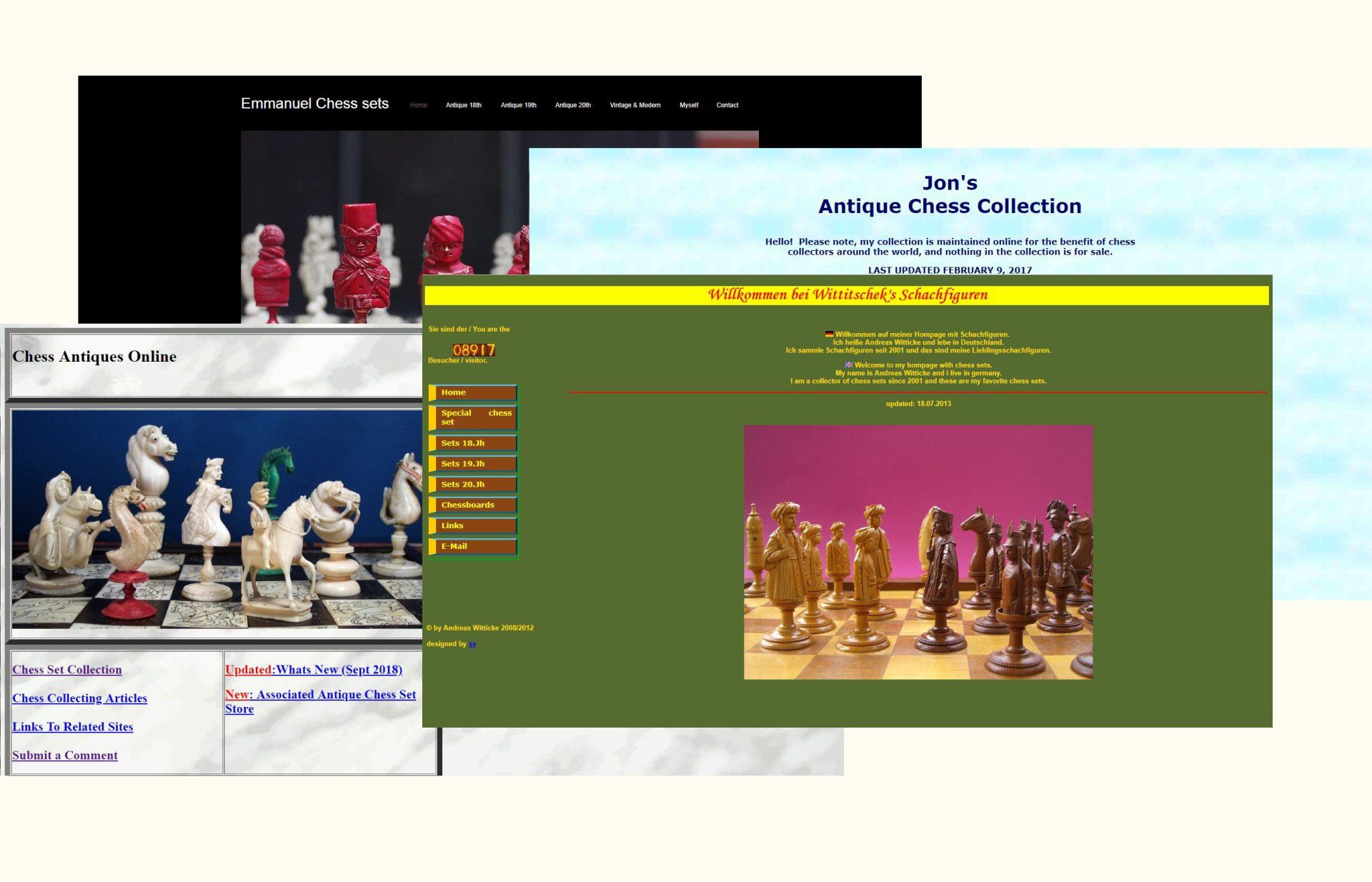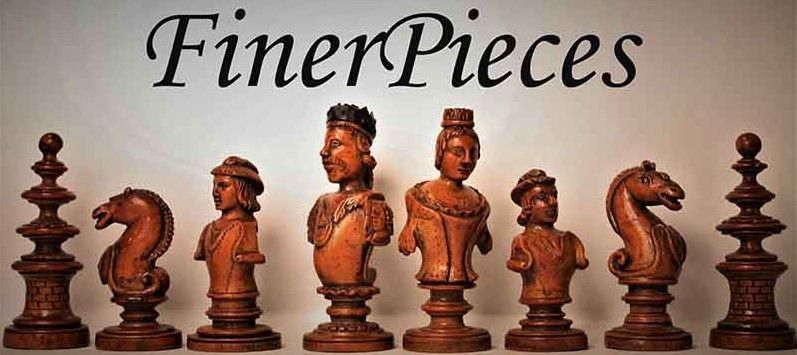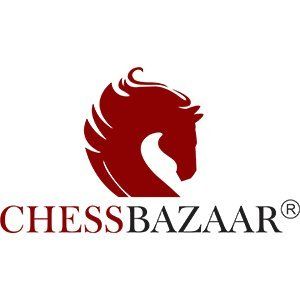Tuvan Shatar set, 1994
Here is another set that belongs to the category of Mongolian Shatar sets. In this case, it comes from northern Mongolia or southern Siberia, more precisely the Russian Republic of Tuva. The set has a king size of 6 cm and is carved from soapstone in extraordinary quality for a set of this small size. Gareth Williams shows a very similar set in his book ‘Master Pieces’ on pages 110/111, which he describes as follows: ‘Carved from soapstone, the set represents the Soyot tradition with a king shown as a “noyion” or master of the house in the costume of a wealthy Utyankh. The queen is shown as a sacred lion of Chinese legend, the camel and horse are constant features of a Mongolian set, the rook is shown as a symbol of movement, the pawns smaller carvings of the sacred lion.’ The camels used as bishops in this type of sets are always the two-humped Bactrian or Mongolian camels with distinctive fur. The symbols used as rooks in this set are extremely unusual and difficult to describe. As the rooks in the Mongolian chess tradition almost always symbolise movement (e.g. in the form of carts or even trucks), this particular symbol is probably also linked to this notion.
The board box belonging to the set is labelled on the underside with, among other things, ‘Республика Тува’ (Republic of Tuva) and the year 1994.
Such sets from Tuva appear to be relatively rare. In the catalogues of specialised chess auctions of the past there is only one example from the Christies auction of 28 March 2006 under lot number 596.


